ISLESFORD — Growing up in the Bronx during the Depression, Ashley Bryan and his siblings collected scraps of colored paper and fabric in the streets that his mother would twist into flowers to decorate their tenement apartment.
When he served in the segregated Army during World War II, the man who would go on to become a widely celebrated author and illustrator of children’s books drew pictures of the scenes he witnessed on toilet paper that he hid in his gas mask.
And later, when he earned a scholarship to study at the Skowhegan School of Painting and Sculpture in central Maine, he made lush paintings of earth and sky that helped him comprehend life in post-World War II America.
Bryan, now 91, has always made sense of life through art.
“It’s part of an aesthetic drive to understand who I am,” he said. “That is our effort, always. The essence of being human is being understood by others. We paint, we write poetry and we express ourselves out of our desire to bring people together in a way that goes beyond who we are as an individual.”
This summer, the Islesford Historical Museum on Little Cranberry Island is hosting an exhibition about Bryan’s life and 70-year career as a painter, poet, children’s book illustrator and puppet maker. The exhibition, “A Visit with Ashley Bryan,” is on view through Sept. 20. It encompasses Bryan’s array of creative expression.
It also serves as a precursor to what friends and family hope will be a permanent study center dedicated not just to Bryan’s art, but his approach to life, which his friends describe as joyful and absent of cynicism.
“He is the most positive person I’ve ever met in my life,” said Jeanne Smith, a summer resident from Newburyport, Massachusetts, who has known Bryan for decades. “He is very humble, but is a wealth of information. He treats every single person who walks through his door as if they are special, especially children.”
When she sees him on the streets or at the Islesford Dock Restaurant, “I know I am in the presence of a great man.”
At dinner, Bryan is treated as royalty. With the bar short on rum last month, the bartender saved the last of a certain brand for Bryan’s favorite cocktail, a Dark and Stormy. When Bryan attended a reading of a local author, he was given a seat front and center – and the first question during the Q&A. He responded with a hug for the author and insisted on a generous tip for the waitstaff.
Islanders wave when he motors past in Ashley’s Chariot, a bright orange golf cart driven by friends. He used to walk everywhere, but has made concessions to age.
When the exhibition opened, dozens of islanders turned out to cheer him. Many of those same friends are leading an effort to make Bryan as widely known off the island. They formed the nonprofit Ashley Bryan Center in hopes of preserving his work and broadly sharing his legacy.
The next step, they hope, is finding a place to permanently house his collection, which fills every corner of Bryan’s house.
He has shelves of puppets, a workbench covered with sea glass and papier-mâché, and vertical stacks of painted canvases, some framed but many that are incomplete or awaiting finishing details. His main living space is packed with books, sea-glass mobiles that hang from the ceiling and dolls that he collects from around the world.
Bryan envisions a center on land next to his island home, where he has lived year-round since 1987. But his friends are thinking much bigger. They want the center to be associated with a mainland liberal arts college with a good museum, to reach a wider audience and emphasize Bryan’s talents as a painter and his commitment to learning.
Bryan is widely known in the world of children’s books, most notably for “Beautiful Blackbird” and “Beat the Story Drum, Pum Pum.” But he has limited exposure in the fine-art world. Most museum exhibitions have focused on his illustrations and puppets. He has written and illustrated about 50 children’s books, many of which have been reprinted in the past year, and his puppets, constructed with seashells and driftwood, are the star attraction of the programs he presents for children.
“He’s never been in the gallery world, and he’s had very few museum shows,” said friend and fellow Islesford painter Henry Isaacs, who is helping to lead the effort to build a center. “But he’s a very good painter. He’s been such a mentor to me as a painter, and we just feel his work should be shown and shown widely.”
WHAT HIS LIFE HAS GIVEN HIM
David Driskell, a leading scholar of African-American art and part-time Maine resident, has never understood why Bryan has not received more attention as a painter.
Bryan’s aesthetic is unique because his life has given him so much to work with, Driskell said. When he began painting in the 1940s, Bryan used muted colors, and the influence of the Ashcan School was evident in his work – human figures active in their daily lives. He painted street scenes in New York, soldiers at war and musicians playing in Paris cafés. With time, his paintings became more colorful, and while the human figure is still present, so too are the flowers, thick vegetation and architectural styles of the island.
“He devoted much of his life to painting for many, many years, but then his career became more centered on illustrating books and he became interested in puppetry,” Driskell said. “But he has continued to paint and remains constantly involved in painting his own perspective of the environment with a concentration of African-American lore.”
Bryan has won many honors. Maine College of Art presented him with its education award in 2005. He received the Coretta Scott King-Virginia Hamilton Lifetime Achievement Award, two career achievement honors from the American Library Association, and the New York Public Library Lions awards.
Among the museums that have shown his paintings is the Milwaukee Art Museum, which hosted an exhibition in 2004 and 2005, focused mostly on Bryan’s puppets. A children’s librarian in Milwaukee knew Bryan through the publishing world.
“She was always talking, ‘Ashley, Ashley, Ashley,’ ” said Barbara Brown Lee, the museum’s chief educator emeritus. “One day, we decided to a do a program with poetry and illustrations of children’s books. She said, ‘Here is our chance to bring Ashley to Milwaukee,’ which we did.”
After meeting Bryan, Lee understood her friend’s enthusiasm.
“You wish you could bring him in every year,” she said. “He is such a breath of sunshine.”
AN OLD MAN’S CHILDLIKE SPIRIT
Bryan’s island house is full of gifts he has received during travels around the globe to present literacy programs for children or to raise money for education, especially in Africa. But visitors are hard-pressed to find evidence of his awards or honors. He uses them as bookends, hiding them on the shelves that sag with the weight of his vast book collection.
“We don’t see him as a famous author,” said Meg Stevens, a 16-year-old island resident who works at the island museum and attended the island school named in Bryan’s honor. “We see him as our neighbor.”
Bryan never locks his door, and he keeps bowls of nuts and candy on his table for guests, who are welcome to stop in unannounced any day. He just asks them to shout loud enough so he can hear them from his studio.
His approach to life, even as an older man, is to wake up every day with a sense of wonder and the spirit of a child.
“Every morning is a whole new day of discovery,” said Bryan, who never married and does not have children. “The one thing I have in common with any adult I meet is childhood. Every person has survived childhood. The most tragic experience you can have in life is the death of a child. That’s why I say, ‘Never let the child within you die.’ ”
It’s for that reason that Bryan gravitated toward children’s books and puppetry. There is no greater achievement than helping a child learn, he said. He conducts programs for kids in Maine and across the country, using his books and puppets. He has thousands of poems in his head, from Mother Goose to Langston Hughes, Rilke to Rimbaud, Keats to Shakespeare. He recites them with dramatic flair to suit whatever occasion awaits him, often in the writer’s native language.
When he taught at Dartmouth in the ’70s and ’80s, Bryan often would quote from Japanese artist Katsushika Hokusai, said Portland physician Rich Entel, who has been a friend since taking Bryan’s drawing class in 1978.
“When I am 80 you will see real progress,” Hokusai said. “At 90, I shall have cut my way deeply into the mystery of life itself. At 100, I shall be a marvelous artist. At 110, everything I create; a dot, a line, will jump to life as never before.”
Bryan has now outlived Hokusai, and Entel believes he has stayed true to the belief that his life and his work improve with age. That may be why Bryan finally consented last year, as he turned 90, when his friends suggested a campaign for the study center to honor his work.
Bryan spends about an hour a day at the Islesford Historical Museum, greeting visitors. The first entry in the exhibition, for the year 1923, typifies the enthusiasm of the show: “Ashley Bryan was born! Yay!”
The final painting in the exhibition is one that remains unfinished. He began it with an overseas sketch during World War II and returned to it this spring. He’s not quite done and has ideas for alterations when this show closes in September. It is a loosely figurative painting that shows a group of men, depicted in vibrant colors, huddled around each other, playing cards.
Bryan resumed work on the painting decades after he started it, because something sparked his curiosity – something left unsaid, a moment he wanted to catch. Like a shell on the beach that caught his eye, or a scrap of paper blowing across a New York street, it compelled Bryan to put his brush to canvas.
To try to make sense.
Copy the Story LinkSend questions/comments to the editors.


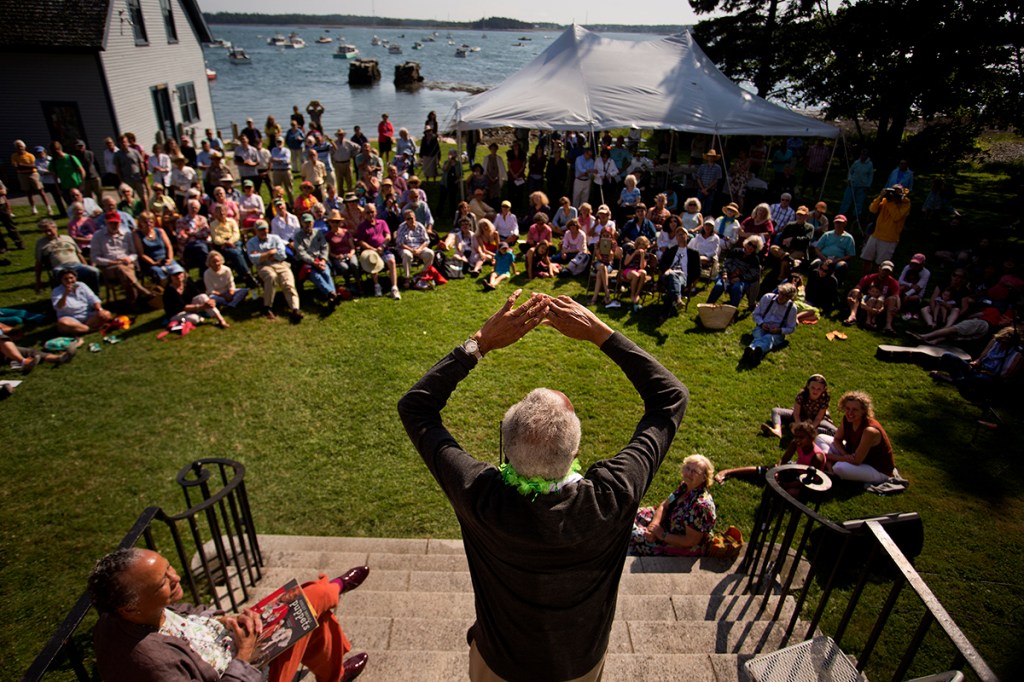
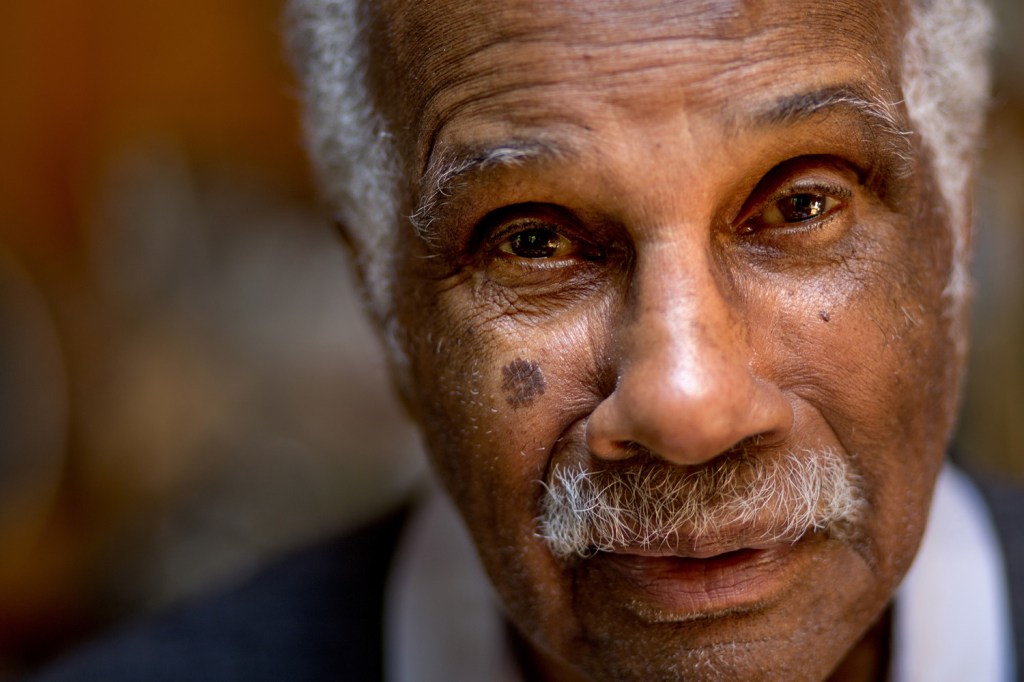
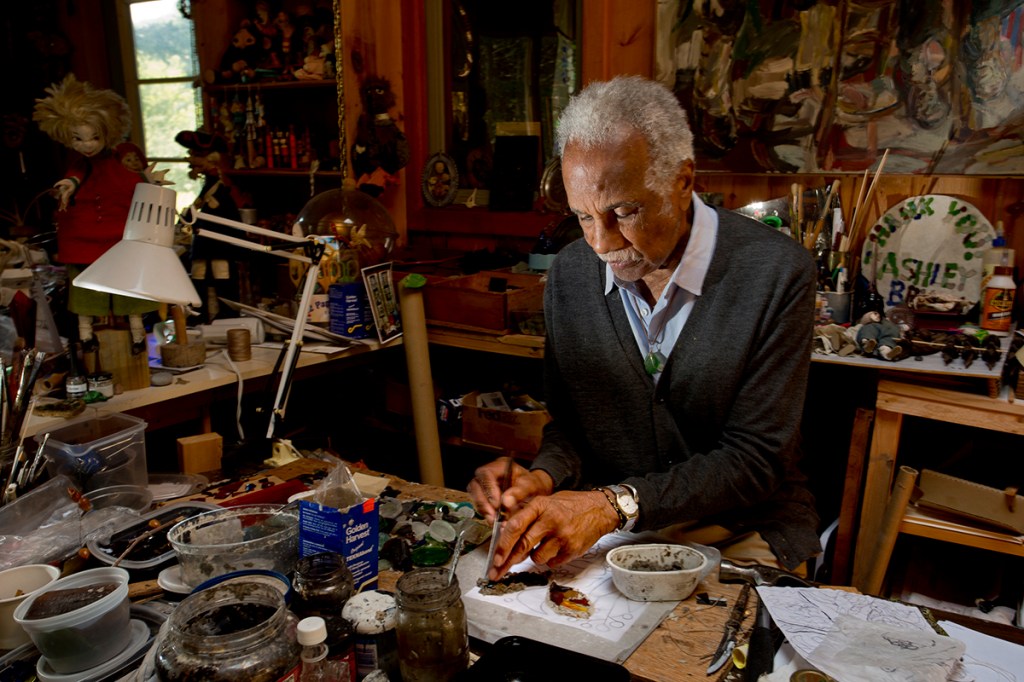

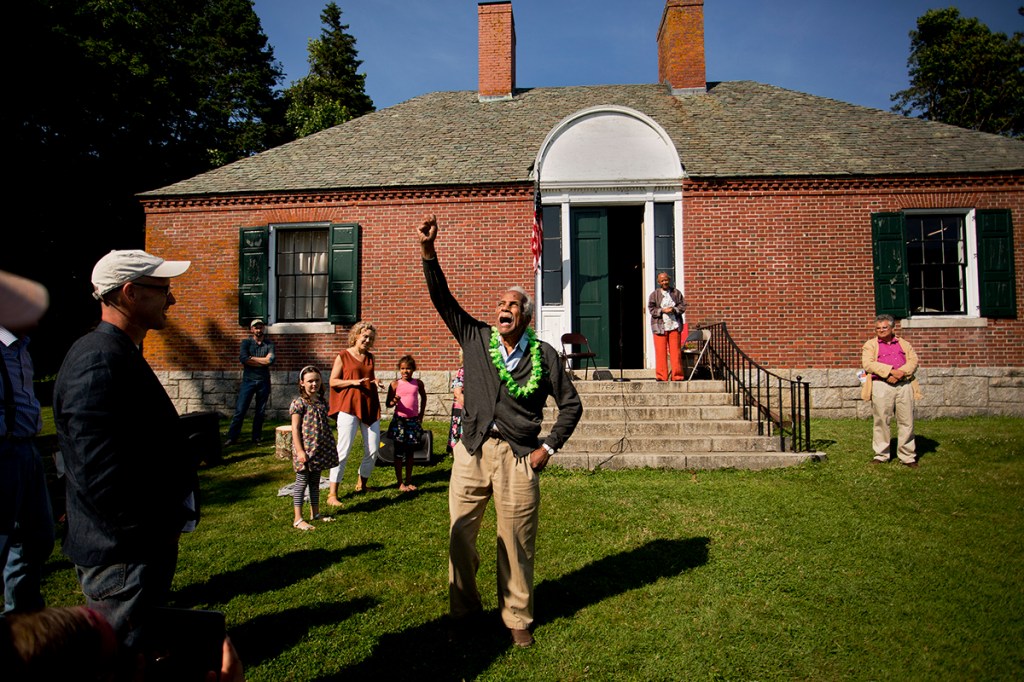
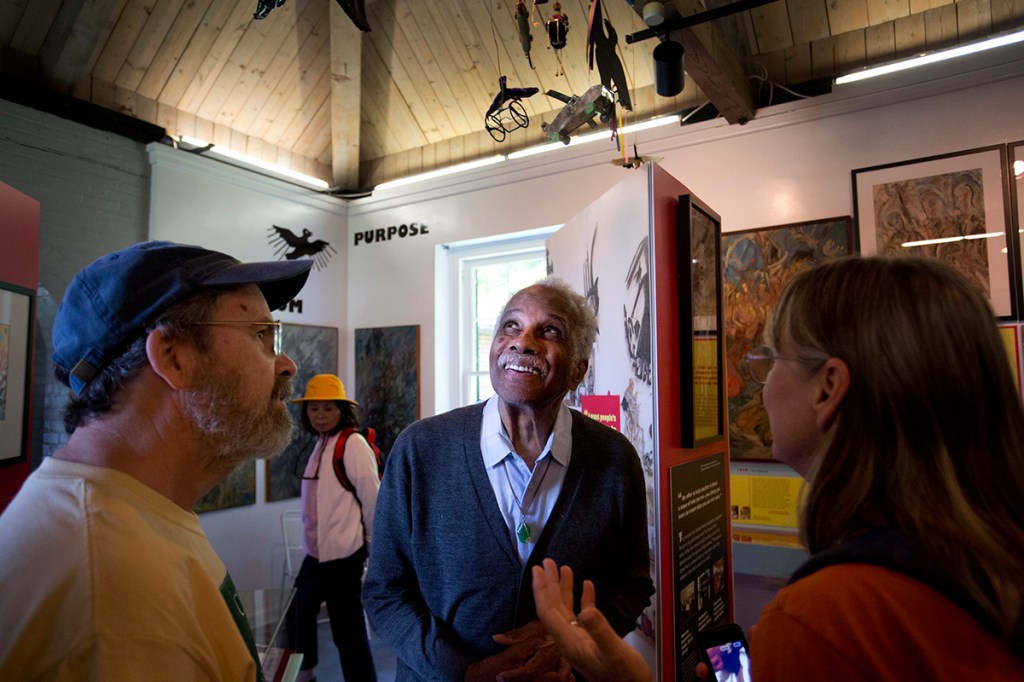
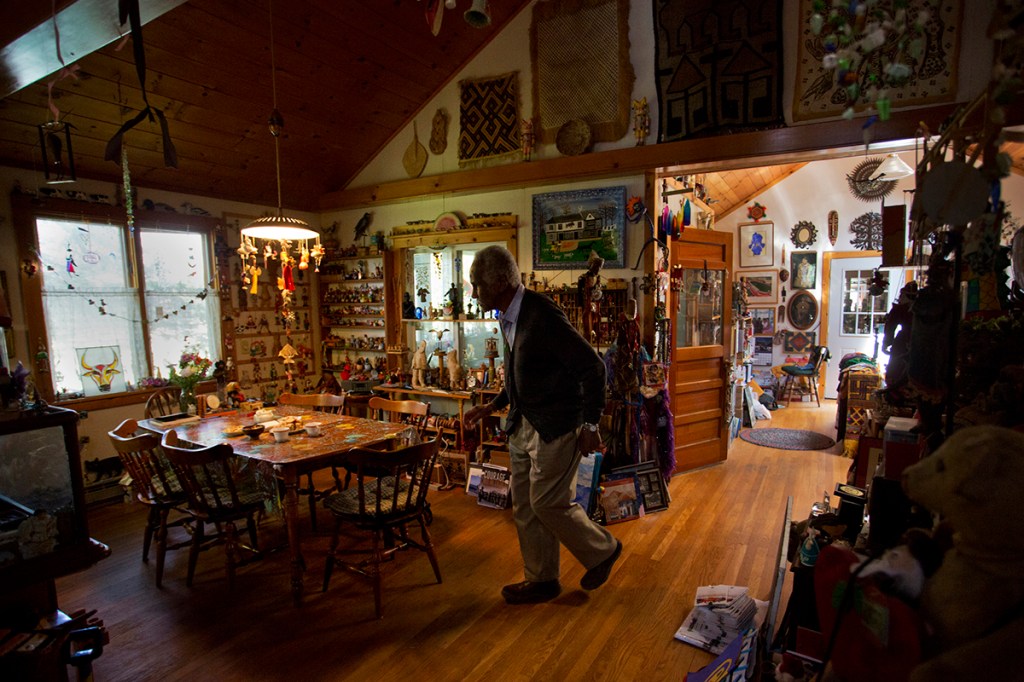
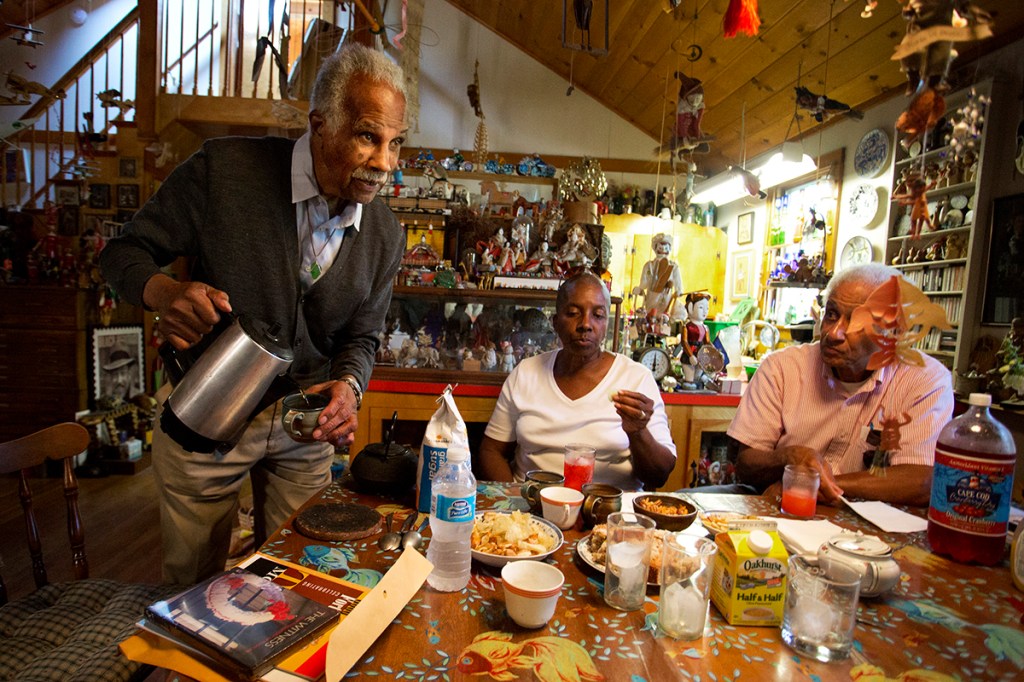
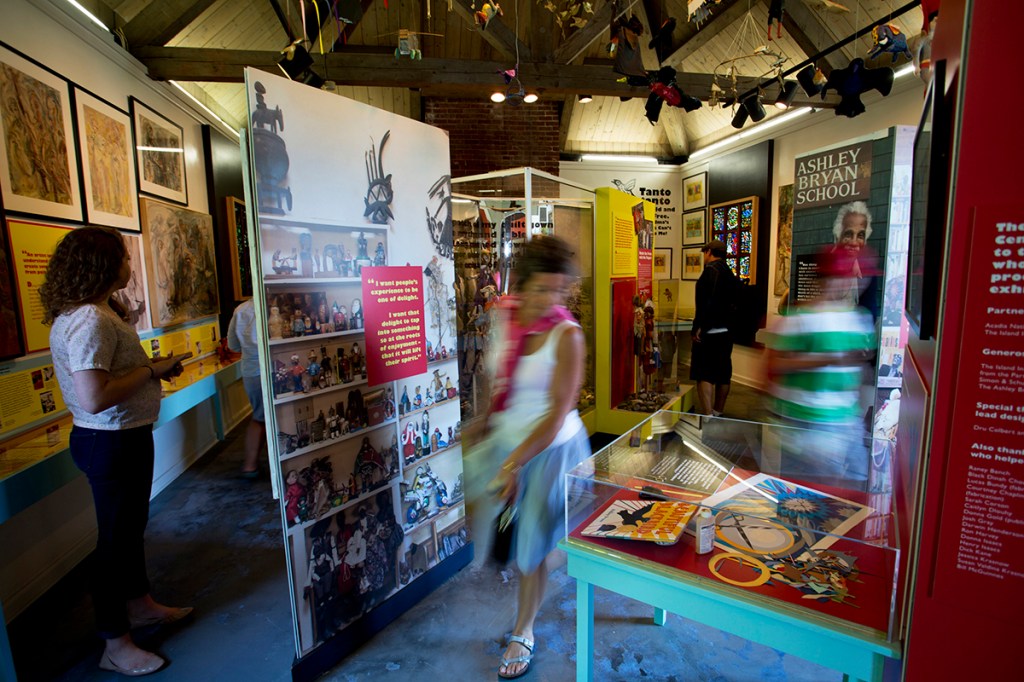
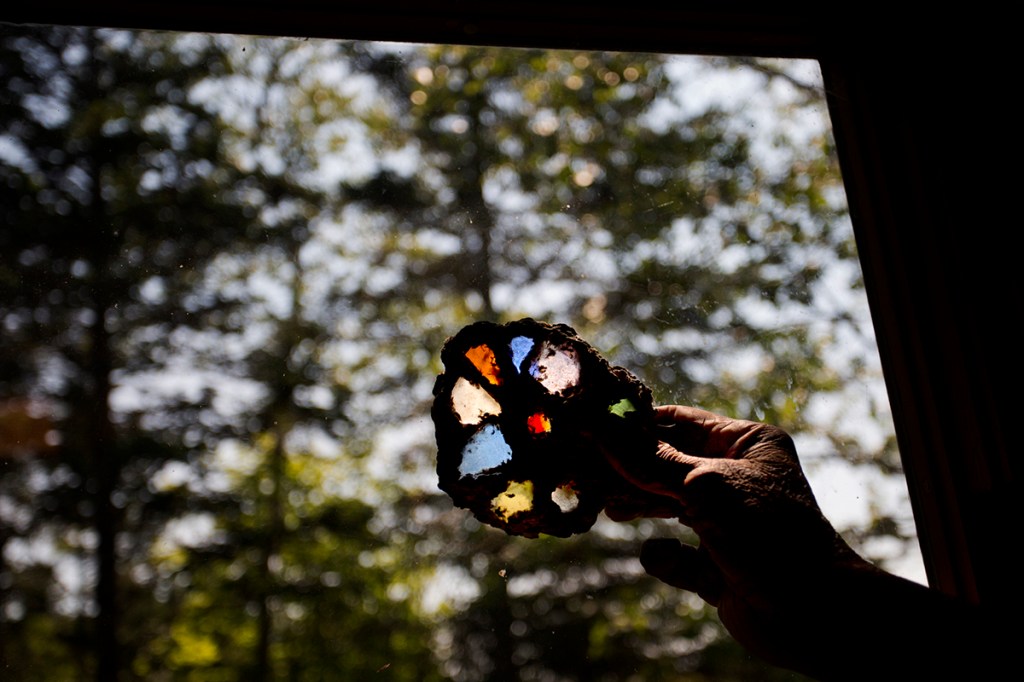
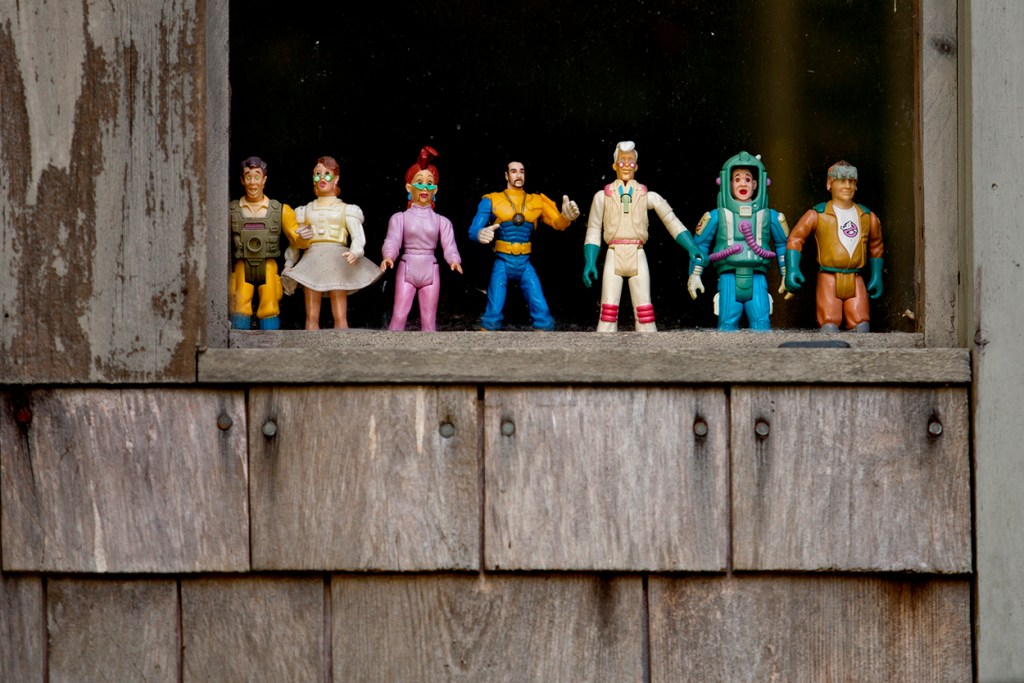
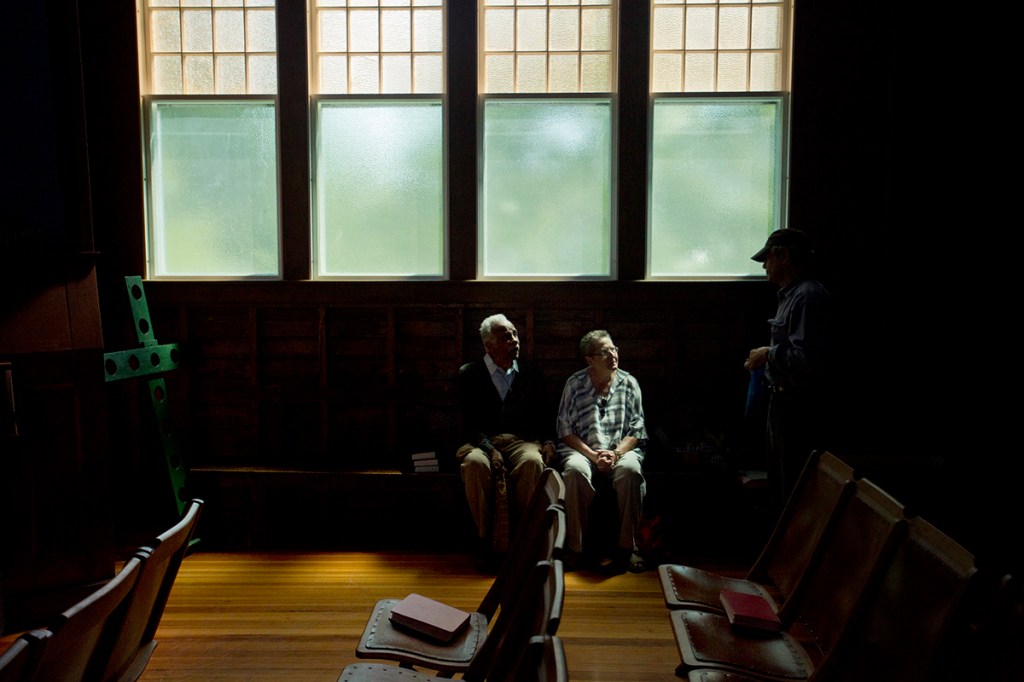
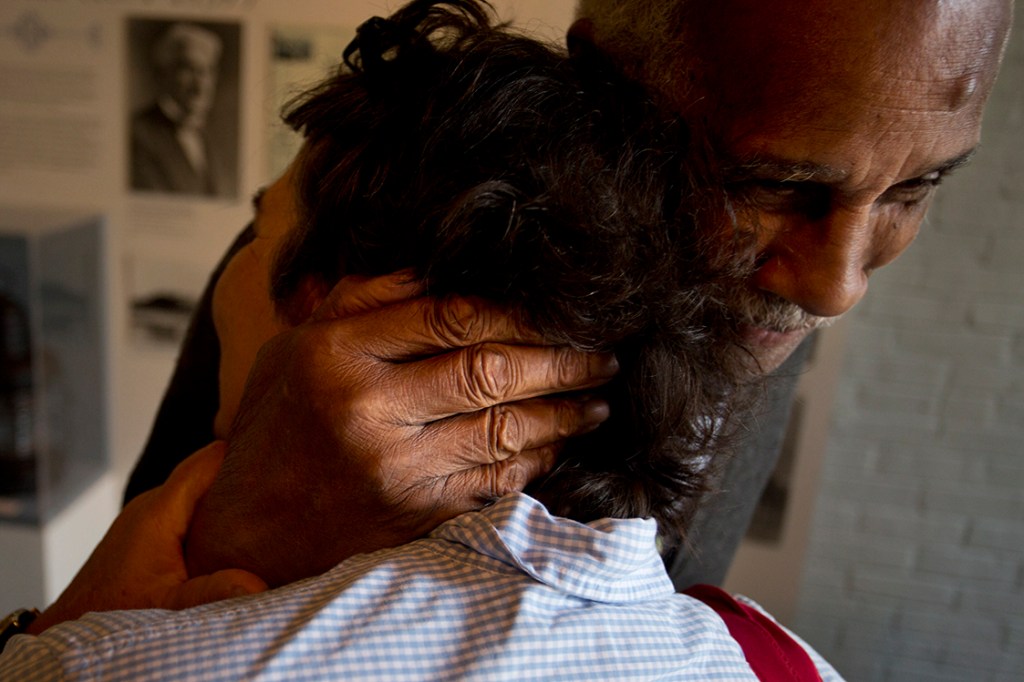


Success. Please wait for the page to reload. If the page does not reload within 5 seconds, please refresh the page.
Enter your email and password to access comments.
Hi, to comment on stories you must . This profile is in addition to your subscription and website login.
Already have a commenting profile? .
Invalid username/password.
Please check your email to confirm and complete your registration.
Only subscribers are eligible to post comments. Please subscribe or login first for digital access. Here’s why.
Use the form below to reset your password. When you've submitted your account email, we will send an email with a reset code.